| 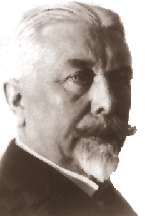 Johann
Heinrich Karl Schütte
Johann
Heinrich Karl Schütte
Born on 26 February 1873 in
Ostenburg (Oldenburg)
Died 1946
Virtually forgotten today, Luftschiffbau Schütte-Lanz
GmbH was Luftschiffbau Zeppelin's only real dirigible-related
competition in all of Germany. Johann Schütte (left),
whose business was funded by the industrialist Karl Lanz,
was initially inspired to study airships when he saw zeppelins
in the sky.
Schütte left his mark on airships with several of
his innovations: streamlined shape, cruciform tails incorporating
rudders and elevators, unibody construction, and drag-reducing
internal keels.
Regrettably, his ships had a basic flaw. Schütte
insisted on laminated, plywood frames instead of the aluminum
alloy used in Zeppelins. At first, the frames were diamond
patterned and later, segmented rings. The glue used in
the joints absorbed moisture and fell apart under stress.
Very few found their way into naval service. The commander
of the Naval Airship Division, Fregattenkapitan Peter
Strasser, disliked them because of their wooden construction.
Most Schutte-Lanz ships were employed by the German army.
Dan Nachbar <airshiplist@mojotron.com> 27 Feb 2003
Why did Schütte use plywood? Grain. Wood has very
little tensile strength across its grain. So the only
way to add the strength to handle a multi-axis load is
to add more material.
The advantage of plywood is that (in theory) one can
selectively orient the grains of the various layers so
as to give strength in exactly the directions required
by the structure.
The same technique is comonly used today in aircraft
design. Only we use uni-axial fiberglass (or carbon fiber)
materials and epoxy "glue" rather than uni-axial wood
and glue.
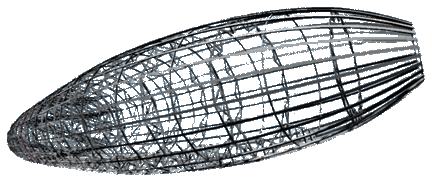
The Schutte-Lanz Luftfahrzeugbau factories were located
at Mannheim-Rheinau; Zeesen; Berlin-Konigswusterhausen.
During WW1, when all patents became subservient to the
war effort, the primary innovations of Schütte were
incorporated into the Luftschiffbau Zeppelin's airships.
Also, the last SL ships incorporated aluminum alloy construction.
If the winds of fate had blown more his way, Schütte
would be as famous as Ferdinand Zeppelin.
'Panamerika' (205,000 cu.?)
Rick Z.
This sounds like exactly the type that Schutte would
have sawn down and sketched over the 1920's, somewhat
larger than one he proposed for Arctic exploration,
etc.
In his day, Schutte was associated with the Technical
University at Berlin-Schlottenberg, while the bulk of
his archival material appears to now be concentrated
at the Technical University/Museum of Mannheim.
His American patent attorney, Frederick Hardesty, wrote
a book KEY TO THE DEVELOPMENT OF THE SUPER AIRSHIP; SCHUTTE
LANZ MANNHEIM-RHEINAU 1906-1930 (privately printed in
New York, 1930.)

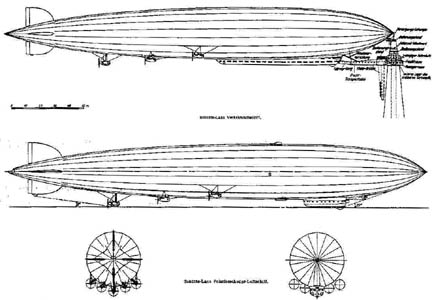
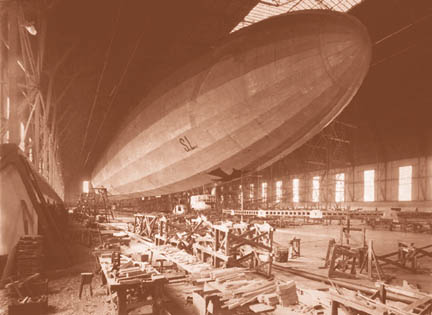
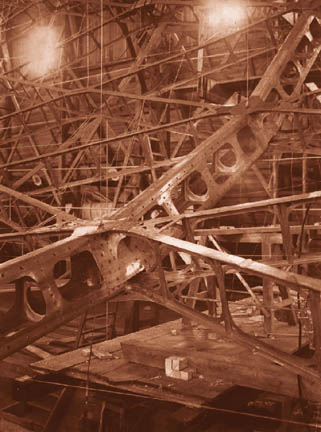
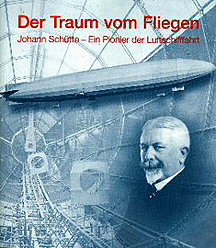
Bibliography:
- Der Traum vom Fliegen: Johann Schütte
-- Ein Pioneer der Luftschiffahrt
Oldenburg : Isensee, 200 -- ISBN: 3895986933 (pbk.)
[eine Kooperation des Stadtmuseums Oldenburg
mit dem Zeppelin Museum Friedrichshafen und der Universität
Oldenburg aus Anlass einer Ausstellung im Stadtmuseum
Oldenburg vom 2. Juli bis 22. Oktober 2000 und im Zeppelin
Museum Friedrichshafen vom 14. Juni bis 9. September
2001]
- Jürgen Bleibler: Schütte-Lanz:
"Im Schatten des Titanen"
Friedrichshafen : Zeppelin Museum : Gessler, 20012 --
ISBN: 3861360632 (pbk.)
- Frederick Hardesty: Key
to the Development of the Super Airship Schütte-Lanz Mannheim-Rheinau
1906-1930: Development of the super-air-ship past,
present and future, a succinct statement of facts,
authorities and supporting data, patent status, history,
legal and technical opinions.
New York: [privately printed], 1930 (192, 7 l. incl.
tables. 28 cm.)
- Johann Friedrich Jahn: Technischer
Nachlass Johann Schütte : ein Bericht
Oldenburg : [s.n.], 1978
- Heinz J. Nowarra: German Airships:
Parseval, Schutte, Lanz & Zeppelin
Schiffer, 1992.
E-text:
- Aeroplanes
and Dirigibles of War by Frederick A. Talbot (Guttenburg
Project E-text):
"Even in Germany itself the defects of the Zeppelin
were recognised and a decided effort to eliminate
them was made by Professor Schutte in co-operation
with a manufacturer of Mannheim named Lanz. The joint
product of their ambitions, the Schutte-Lanz, is declared
to be superior to the Zeppelin, but so far it has
failed to justify any of the claims of its designers.
This vessel, which also favours the colossal, is likewise
of the rigid type, but realising the inherent dangers
accruing from the employment of metal for the framework,
its constructors have used wood, reinforced and strengthened
where necessary by metallic angle-iron, plates, and
bracing; this utilisation of metal is, however, carried
out very sparingly. The first vessel of this class
was a huge failure, while subsequent craft have not
proved much more successful.
In fact, one of the largest German airships ever
designed, L4, is, or rather was, a Schutte-Lanz, with
a capacity of 918,000 cubic feet, but over 6,000 pounds
lighter than a Zeppelin of almost similar dimensions.
I say "was" since L4 is no more. The pride of its
creators evinced a stronger preference for Davy Jones'
Locker than its designed realm. Yet several craft
of this type have been built and have been mistaken
for Zeppelins owing to the similarity of the broad
principles of design and their huge dimensions. In
one vital respect they are decidedly inferior to their
contemporary--they are not so speedy."
- British
Airships, Past/Present/Future by George Whale (Guttenburg
Project E-text):
"A company known as the Schutte-Lanz Company was
also responsible for the production of rigid airships.
They introduced a design, which was a distinct departure
from Zeppelin or anyone else. The hull framework was
composed of wood, the girders being built up of wooden
sections. The shape of these ships was much more of
a true streamline than had been the Zeppelin practice,
and it was on this model that the shape of the super-Zeppelin
was based. These ships proved of use and took part
in raids on this country, but the Company was taken
over by the Government and the personnel was amalgamated
with that engaged on Zeppelin construction during
the war."
Links:
Schutte-Lanz
GmbH
Postfach 11 56
D-68776 Brühl
GERMANY
Email: schuette-lanz@finnforest.com
Tel: +49 62 02 20 01 0
Fax: +49 62 02 7 34 19
Magazines:
- Airpower. A Sentry Magazine. November
1973, Volume 3, No. 6. Includes an article on the Schutte-Lanz
Airships.
|